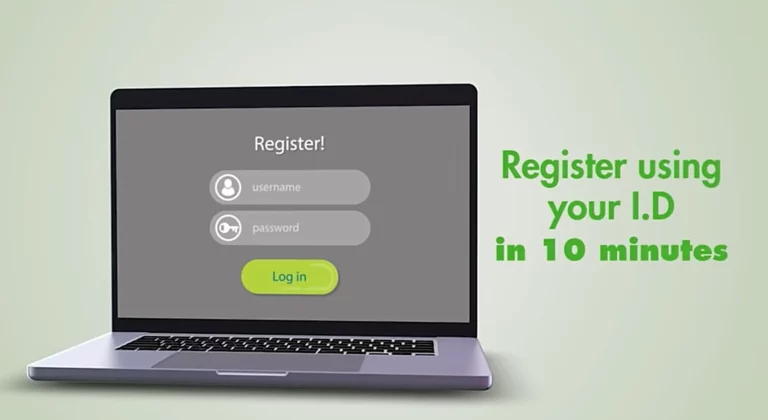What is the Difference Between LOS and LMS?
Los and LMS are both acronyms commonly used in Finance, but they refer to different stages of the loan lifecycle and have distinct functions. Here’s a breakdown of the key differences:
LOS – Loan Origination System:
- Focuses on the initial stages of the loan process, from application to funding.
- Helps lenders streamline the onboarding process for borrowers by:
- Collecting and verifying borrower information.
- Assessing creditworthiness and calculating risk.
- Automating workflows for document handling and approval.
- Facilitating communication between lenders and borrowers.
- Benefits include:
- Faster loan processing times.
- Improved underwriting accuracy.
- Enhanced customer experience.
A Loan Origination System (LOS) is a specialized software platform used by financial institutions like banks, credit unions, and online lenders to manage the complete loan application process, from the initial submission to funding. It’s basically the brains behind streamlining the lending process and making it quicker, more efficient, and less error-prone.
Here’s what an LOS typically does:
1. Application Intake and Management:
- Allows borrowers to easily submit loan applications online or in person.
- Captures and verifies borrower information securely.
- Routes applications to the appropriate loan officers or processors.
2. Underwriting and Risk Assessment:
- Collects credit reports, income verification, and other financial data.
- Analyzes data to assess the borrower’s creditworthiness and loan risk.
- Uses scoring models and guidelines to make preliminary approval decisions.
3. Documentation and Workflow Management:
- Automates the generation of loan documents and forms.
- Facilitates secure document collection and exchange with borrowers.
- Tracks and manages the approval workflow with internal teams.
4. Pricing and Decisioning:
- Determines the appropriate loan interest rate and terms based on risk assessment.
- Presents loan options to the borrower for review and acceptance.
- Sends final approval decisions and disburses funds if approved.
5. Compliance and Reporting:
- Ensures compliance with regulatory requirements and internal lending policies.
- Generates reports and dashboards to track loan performance and risk metrics.
- Helps mitigate fraud and compliance risks.
Benefits of Using an LOS:
- Faster Loan Processing: Automates tasks and eliminates manual work, speeding up the entire loan origination process.
- Improved Underwriting Accuracy: Provides data-driven insights and analytics for smarter lending decisions.
- Reduced Costs: Streamlines workflows and minimizes manual errors, leading to operational cost savings.
- Enhanced Customer Experience: Creates a user-friendly application process and faster loan approvals.
- Improved Compliance: Ensures adherence to regulations and internal policies.
Examples of Loan Origination System
Some examples of loan origination software include LendingPad, Calyx, BankPoint, Newgen Software loan origination system, Floify, Finflux, TurnKey Lender, Mortgage Automator, and i-Apply.
Overall, a Loan Origination System is a crucial tool for any financial institution that wants to originate loans efficiently, securely, and profitably.
LMS – Loan Management System:
- Takes over after the loan has been funded and focuses on ongoing servicing and administration.
- Tracks and manages loan payments throughout the loan term, including:
- Scheduling and processing payments.
- Handling delinquencies and collections.
- Generating statements and reports.
- Providing online payment and account management tools for borrowers.
- Benefits include:
- Increased operational efficiency.
- Improved compliance with regulations.
- Enhanced customer service for loan repayment.
A Loan Management System (LMS) picks up where a Loan Origination System (LOS) leaves off!
While LOS focuses on the initial stages of the loan process (application to funding), LMS takes over post-funding and handles the ongoing servicing and administration of the loan throughout its term.
Here’s how an LMS works:
1. Loan Account Management:
- Creates and maintains individual loan accounts with all relevant details (borrower information, loan terms, payment history, etc.).
- Tracks and manages scheduled loan payments, including processing installments, calculating interest, and applying late fees.
- Handles automated payment processing through various channels (online, ACH, etc.).
2. Delinquency and Collections:
- Identifies and tracks delinquent accounts and late payments.
- Initiates collection activities based on defined policies and escalation procedures.
- Manages communications with borrowers regarding delinquencies and payment adjustments.
3. Reporting and Analytics:
- Generates reports on loan performance, delinquencies, collection activity, and other key metrics.
- Offers data analytics and insights to help lenders make informed decisions about loan servicing strategies.
- Provides compliance reporting to satisfy regulatory requirements.
4. Customer Service:
- Provides secure online portals for borrowers to view account information, make payments, and manage loans.
- Facilitates communication between borrowers and customer service representatives regarding loan inquiries and issues.
- Offers loan modification options and other servicing tools to support borrowers facing financial difficulties.
Benefits of Using an LMS:
- Increased Operational Efficiency: Automates routine tasks, reduces manual work, and improves overall loan servicing efficiency.
- Improved Compliance: Ensures adherence to regulations and collection practices guidelines.
- Enhanced Risk Management: Early identification of delinquencies and proactive collection measures help mitigate potential losses.
- Improved Customer Service: Provides borrowers with self-service tools and convenient communication channels for better loan management.
- Data-Driven Decisions: Analytics and reporting insights help lenders optimize servicing strategies and identify areas for improvement.
Examples of Loan Management System
Some examples of Loan Management Systems are:
- HES LMS: It is a cloud-based loan management system that offers features such as client onboarding, loan origination, underwriting, servicing, and collection. It also provides analytics and reporting tools.
- defi SOLUTIONS: It is a loan management system that allows banks, credit unions, captives, and other lenders to streamline the management of all their lending processes, thus reducing operational expenses. It offers features such as loan origination, underwriting, servicing, and collection.
- Visartech: It is a digital platform that helps automate every stage of the loan lifecycle from application to closing. It offers features such as loan processing systems, loan servicing software, and analytics tools.
- Ebix Lending Management System: It is an all-round LMS that provides industry-standard canned reports and dashboards with options to integrate with Tableau. It offers features such as loan origination, underwriting, servicing, and collection.
A Loan Management System is crucial for any lender managing a portfolio of active loans. It automates tasks, improves efficiency, enhances risk management, and optimizes the borrower experience through the loan term.
Key Differences:
- Timeline: LOS manages pre-funding, while LMS manages post-funding.
- Function: LOS focuses on loan origination, while LMS focuses on loan servicing.
- Benefits: LOS aims for faster processing and better underwriting, while LMS aims for efficient servicing and compliant operation.
Integration:
While distinct, LOS and LMS are often integrated platforms for a seamless loan lifecycle management.
In summary, Los and LMS are essential tools for lenders, each playing a crucial role in different stages of the loan process. Understanding their differences helps you appreciate how they optimize lending operations and enhance borrower experience.
Do you have any other questions about Los, LMS, or any other aspect of finance? I’m happy to help!




